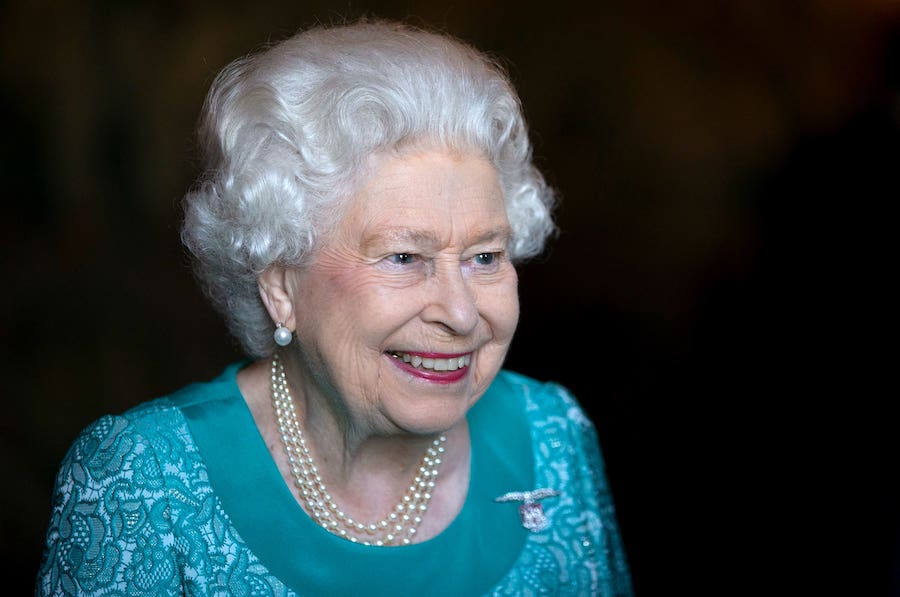Queen’s lifelong service as nation’s longest reigning monarch
Elizabeth II, who was born on April 21 1926, ruled the nation for decades, acceding to the throne at the age of just 25 in 1952.
The Queen was the longest reigning monarch in British history, heralded for her unparalleled devotion to royal duty during more than 70 years on the throne.
At the centre of national life, Elizabeth II was head of state, head of the armed forces, head of the Commonwealth, and supreme governor of the Church of England.
Her knowledge and professionalism were unprecedented and her reign as a constitutional monarch saw more than a dozen prime ministers.
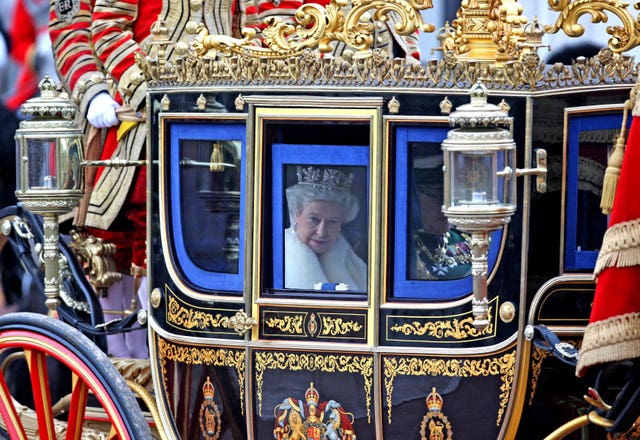
The Queen leaves Buckingham Palace for the State Opening of Parliament in 2009 (Chris Radburn/PA)
Abdication was never an option after she promised to rule for her whole life, and she was still carrying out her royal duties without fuss or complaint as she neared 100, when most people would have retired 35 years earlier.
The Queen was a figure of continuity as her country changed in the 20th century, through the millennium and in the 21st century.
During her lifetime, penicillin was discovered, man landed on the Moon, Britain got its first woman prime minister, and the internet was invented.
She symbolised the stability of the nation, and most people had known no other monarch on the British throne.
At her side for 73 years was the Duke of Edinburgh, her outspoken consort, with whom she fell in love as a teenager when he was a handsome naval cadet.
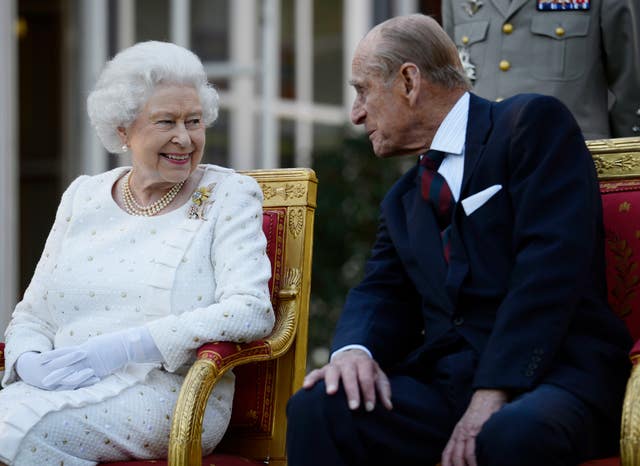
The Queen and the Duke of Edinburgh were married for more than 73 years (Owen Humphreys/PA)
The couple were close confidants and allies, with the success of their relationship put down to the compatibility of their different characters.
The Queen was passive, cautious and conventional, while Philip, often known for his gaffes, was more adventurous, tempestuous and active.
His death in 2021 at the age of 99 was devastating for the Queen, but she continued with her duties at head of state, composed and committed.
Elizabeth II was also a mother of four, granny to eight grandchildren and great-granny, or Gan-Gan, to a large brood of great-grandchildren.
Princess Elizabeth Alexandra Mary of York was born at 2.40am on April 21 1926 at the home of her maternal grandparents in Mayfair.
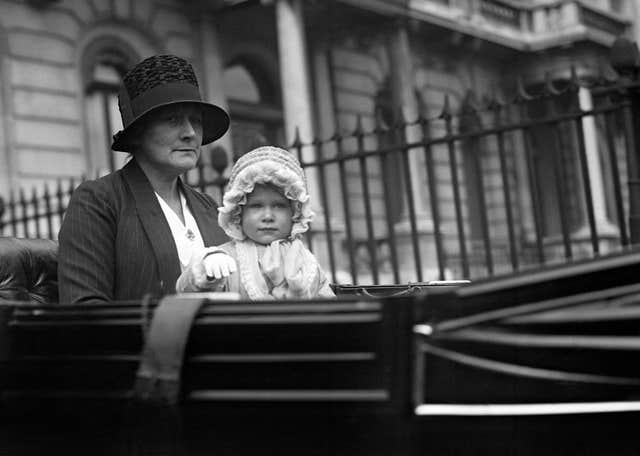
Two-year-old Princess Elizabeth waves to crowds as she arrives back in Piccadilly in 1928 (PA)
She was never expected to be Queen, but the abdication of her uncle, Edward VIII, in 1936 changed everything, leaving her father as King George VI and making his eldest daughter, sensible, bright and methodical Elizabeth, the heiress presumptive.
On her 21st birthday, the princess vowed in a radio broadcast from South Africa that “my whole life, whether it be long or short, shall be devoted to your service”.
Elizabeth and her distant cousin, Lieutenant Philip Mountbatten, who became the Duke of Edinburgh, had been married for less than five years when their lives were altered irrevocably by the death of the King on February 6 1952.
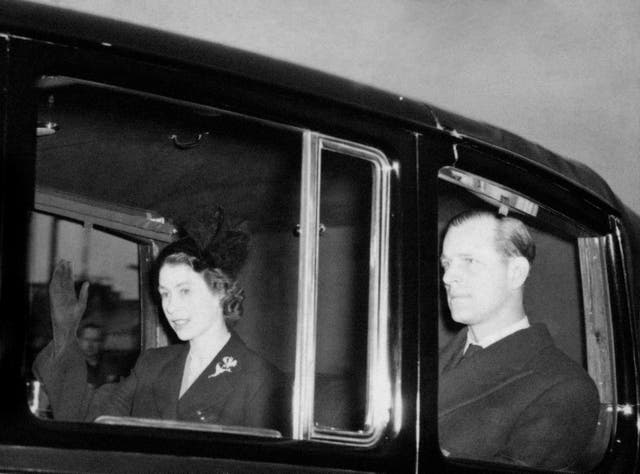
The new Queen, Elizabeth II, returns to Clarence House with the Duke of Edinburgh after the sudden death of her father (PA)
The princess was just 25.
Away from her public duties, the Queen’s marriage to Philip produced four children – Prince Charles, born in 1948, Princess Anne, born in 1950, followed by Prince Andrew, in 1960, and Prince Edward, in 1964.
In 1977, record crowds greeted the monarch during her Silver Jubilee celebrations and thousands held street parties in her honour.
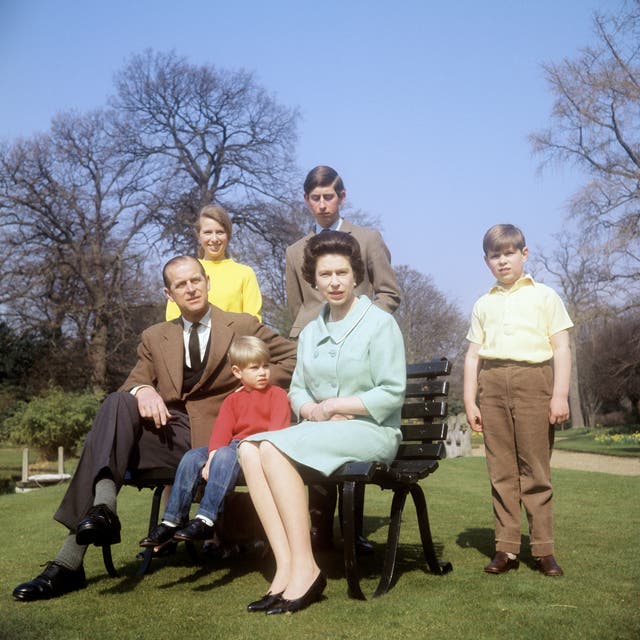
The Queen and Philip with their four children (PA)
The Queen was the royal family’s rock and, untainted by royal scandals, her own personal popularity remained solid when the antics of others shook the House of Windsor.
Even after the divorces of three of her four children, the death of Diana, Princess of Wales, when the monarchy faced its gravest crisis since the abdication of Edward VIII, the trials and tribulations of the Duke and Duchess of Sussex, and the controversy surrounding the Duke of York, the Queen was a steadfast figure.
She dubbed 1992 her “annus horribilis” as during that year the Princess Royal divorced, the Duke and Duchess of York separated, the Prince and Princess of Wales were splitting up, and Windsor Castle went up in flames.
When Diana was killed in a Paris car crash in 1997, the Queen was perceived as being out of step with the feelings of mourners, with the public left wondering why the monarch, who was at Balmoral with Princes William and Harry, took so long to speak publicly about the tragedy.
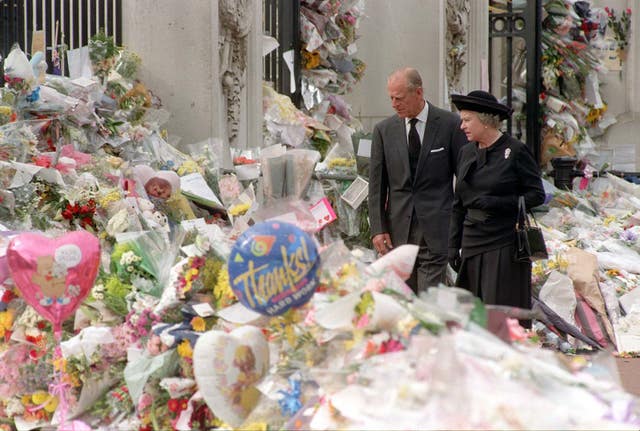
The Queen and Philip view the floral tributes to Diana, Princess of Wales, at Buckingham Palace (John Stillwell/PA)
In 2002, she suffered the tragic double blow of losing both the Queen Mother and her sister, Princess Margaret, within just weeks of one another.
It was her Golden Jubilee year, but the celebrations continued, with one million people turning out in June to party on the streets of London, much like during her Diamond Jubilee 10 years later.
The dawn of the new millennium was a much happier period for the Queen, with Charles settled after marrying his long-term love, Camilla Parker Bowles, who became the Duchess of Cornwall, in 2005.
There was delight in 2011 with the wedding of the Duke and Duchess of Cambridge, followed by the births of their children, Prince George, Princess Charlotte and Prince Louis.
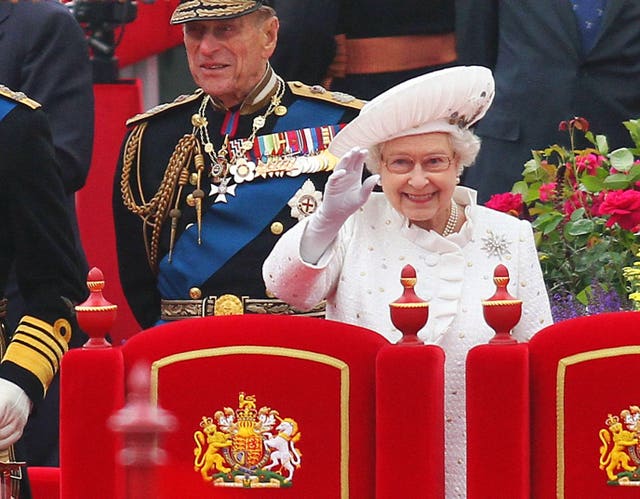
The Queen on board the Spirit of Chartwell during the Diamond Jubilee Pageant in 2012 (Peter Tarry/The Sunday Times/PA)
In September 2015, the Queen passed the record set by her great-great-grandmother Queen Victoria to become the country’s longest-ever reigning monarch, but viewed the achievement as just a consequence of a long life.
The Duke of Edinburgh retired in August 2017 after decades of royal service, but the Queen continued on.
Like the rest of the nation, she went into lockdown as the Covid-19 pandemic swept the country in 2020.
Staying at Windsor with Philip, the monarch made not one but two rare televised addresses to the nation just weeks apart, telling a troubled country separated from their loved ones: “We will meet again.”
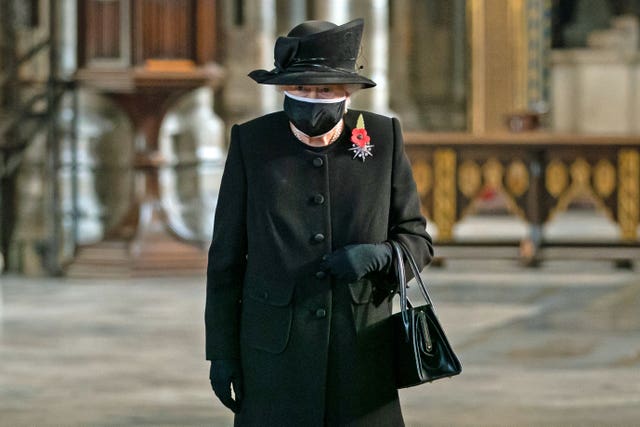
The Queen wears a face mask during a ceremony to mark the centenary of the burial of the Unknown Warrior in Westminster Abbey in 2020 (Aaron Chown/PA)
In the midst of the coronavirus crisis, the Duke and Duchess of Sussex, who quit as senior royals, accused the royal family in a television interview in the US of being racist and the institution of failing to help a suicidal Meghan.
The Queen kept calm and carried on, as was her custom, saying “some recollections may vary” and that the matter would be dealt with privately.
Just weeks later, Philip died at Windsor after a month in hospital, and the grieving monarch sat socially distanced and alone at his funeral because of the restrictions during the pandemic.
But she quickly returned to public duties and was also seen out and about at the Royal Windsor Horse Show and Ascot, enjoying her favourite pastimes.
She caught Covid in February 2022, suffering from mild cold-like symptoms, but continued with light duties from Windsor.
Her Platinum Jubilee – a first for a British monarch – was a time of celebration and millions took to the streets in her honour during four days of festivities.
But by then the Queen was noticeably frailer and facing ongoing mobility problems, meaning her Jubilee weekend engagements were limited to a beacon lighting and three appearances on the Palace balcony.
Stoical, composed, pragmatic, private and with an unshakeable Christian faith, the Queen possessed a dry sense of humour and a sharp wit and was known for her love of outdoor life, horses, racing and corgis.

The Queen with her corgis in 1973 (PA)
She was one of the most famous faces on the planet, recognisable by her brimmed hats, her grey curled hair, brightly-coloured coats and pristine white gloves.
Off duty, she dressed for country life in a headscarf, tweed or tartan skirt, and wellies.
Even in her twilight years, her commitment to royal duties as monarch continued, as she devoted her life to service without fuss or grumbling.
Despite all of her family’s ups and downs, Elizabeth II’s reign as monarch was consistent and dependable and her dedication unwavering.
The Press Association
Latest posts by The Press Association (see all)
- Lung Cancer Awareness Month: Myths about lung cancer everyone needs to stop believing - October 31, 2024
- Classic FM’s Dan Walker and Charlotte Hawkins on keeping pets calm this fireworks season - October 30, 2024
- What the budget will actually mean for you – is it better or worse than you thought it would be? - October 30, 2024
- Wham!: Last Christmas Unwrapped to celebrate song’s 40th anniversary on BBC Two - October 30, 2024
- How David Attenborough is putting Asia firmly on the wildlife map - October 30, 2024








